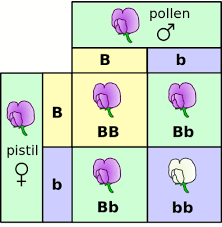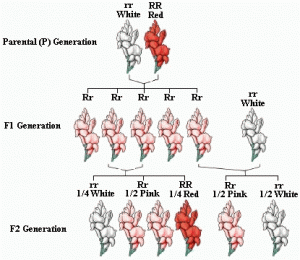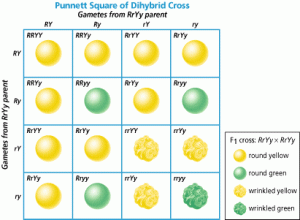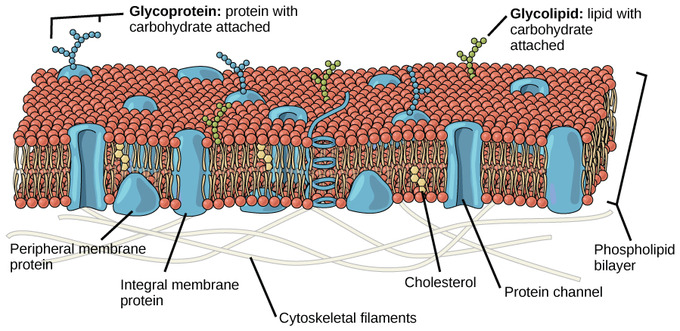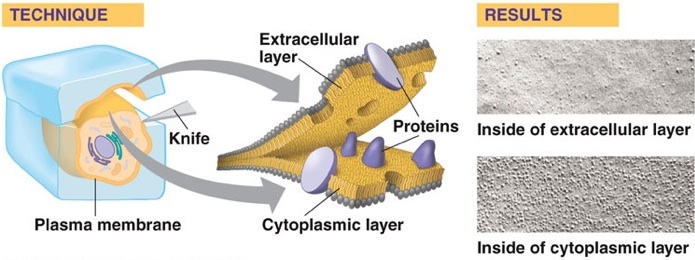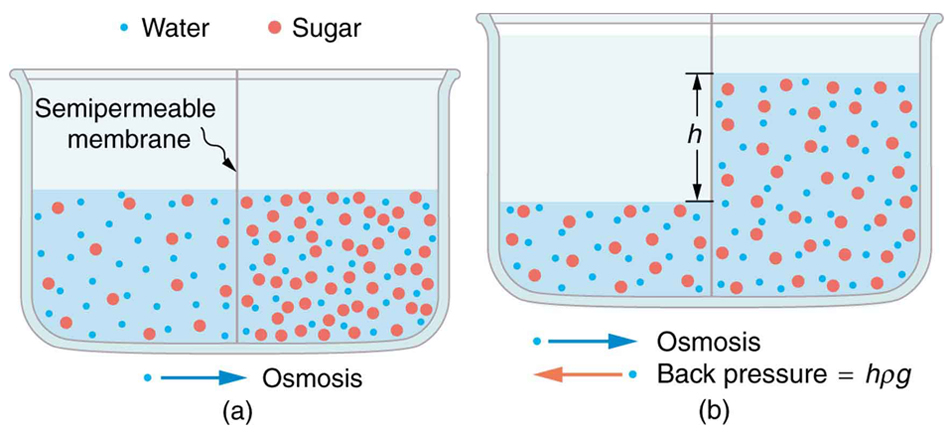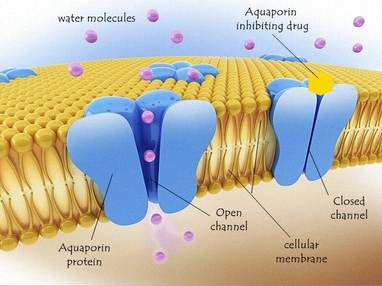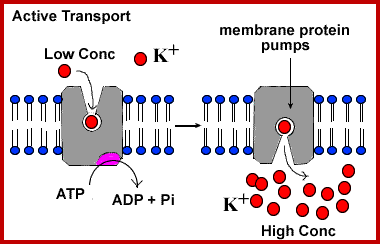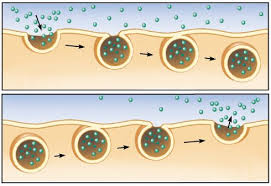Chapter 10 : Photosynthesis
Photosynthesis
Photosynthesis is the process that converts solar energy to chemical energy. Directly or indirectly, photosynthesis nourishes almost the entire living worlds
-Autotrophs sustain themselves without eating anything derived from other organisms
-Autotrophs are the producers of the biosphere, producing organic molecules from CO2 and other inorganic molecules.
-Almost all plants are photoautotrophs, using the energy of sunlight to make organic molecules from H2O and CO2.
-Heterotrophs obtain their organic material from other organisms.
-Heterotrophs are the consumers of the biosphere.
-Almost all heterotrophs, including humans, depend on photoautotrophs for food and O2
Photosynthesis
-Photosynthesis converts light energy to the chemical energy of food.
-Chloroplasts are structurally similar to and likely evolved from photosynthetic bacteria.
-The structural organization of these cells allows for the chemical reactions of photosynthesis.
-The chloroplasts have their own DNA and their own ribosomes.
Chloroplasts: the site of photosynthesis in plants
-Leaves are the major locations of photosynthesis
-Their green color is from chlorophyll, the green pigment within chloroplasts
-Light energy absorbed by chlorophyll drives the synthesis of organic molecules in the chloroplast
-CO2 enters and O2 exits the leaf through microscopic pores called stomata
-Chloroplasts are found mainly in cells of the mesophyll, the interior tissue of the leaf
-A typical mesophyll cell has 30-40 chloroplasts.
-The chlorophyll is in the membranes of thylakoids (connected sacs in the chloroplast),thylakoids may be stacked in columns called Grana.
-Chloroplasts also contain stroma a dense fluid
Tracking atoms through photosynthesis
– Photosynthesis can be summarized as the following equation:
6CO2 + 12H2O + light energy → C6H12O6 + 6O2 + 6H2O
– Chloroplasts, split H2O into hydrogen and oxygen, incorporating the electrons of hydrogen into sugar molecules
Photosynthesis is a redox process in which H2O is oxidized and CO2 is reduced
CO2 + H2O→⌊ch2o⌋+O2
CO2 + H2S →⌊CH2O⌋+2S
The two stages of photosynthesis
Photosynthesis consists of the light reactions (the photo part) and Calvin cycle (the synthesis part).
The light reactions (in the thylakoids)
- Split H2O
- Release O2
- Reduce NADP+ to NADPH
- Generate ATP from ADP by photo phosphorylation.
The Calvin cycle (in the stroma) forms sugar from CO2 using ATP and NADPH.
- The Calvin cycle begins with carbon fixation, incorporating CO2 into organic molecules.
- Chloroplasts are solar–powered chemical factories.
- Their thylakoids transform light energy into the chemical energy of ATP and NADPH
The nature of sunlight
– Light is a form of electromagnetic energy, also called electromagnetic radiation
– Like other electromagnetic energy light travels in rhythmic waves
– Wavelength is the distance between crests of waves
– Wavelength determines the type of electromagnetic energy
– the electromagnetic spectrum is the entire range of electromagnetic energy, or radiation.
– Visible light consists of wavelengths (including those that drive photosynthesis) that produce colors we can see.
– Light also behaves as though it consists of discrete particles called photons.
Photosynthetic pigments
Pigments are substances that absorb visible light
Different pigments absorb different wavelengths
Wavelengths that are not absorbed are reflected or transmitted
Leaves appear green because chlorophyll reflects and transmits green light
A spectrophotometer measures a pigment’s ability to absorb various wavelengths. This machine sends light through pigments and measures the fraction of light transmitted at each wavelength
spectrophotometer
An absorption spectrum is a graph plotting a pigment light absorption versus wavelength .The absorption spectrum of chlorophyll a suggests, that violet-blue and red light, work best, for photosynthesis . An action spectrum, profiles the relative effectiveness of different wavelengths of radiation in driving a process. The action spectrum of photosynthesis was first demonstrated in 1883 by Theodor W.Engelmann. In his experiment he exposed different segments of a filamentous algae to different wavelengths.Areas receiving wavelengths favorable to photosynthesis produced excess O2. He used the wavelength of aerobic bacteria clustered along the algae as a measure of O2 production.Chlorophyll a is the main photosynthesis pigment.Accessory pigments such as chlorophyll b broaden the spectrum used for photosynthesis. Accessory pigments called carotenoids absorb excessive light that would damage chlorophyll b
Structure of pigments
Excitation of chlorophyll by light
When a pigment absorbs light, it goes from a ground state to an excited state, which is unstable. When excited electrons fall back to the ground state, photons are given off, an afterglow called fluorescence. If illuminated an isolated solution of chlorophyll will fluoresce, giving off light and heat.
Chapter 9 : cellular energy production
AEROBIC WAY
The citric acid cycle completes the energy yielding oxidation of organic molecules. In the presence of O2, pyruvate enters the mitochondrion. Before the citric acid cycle can begin, pyruvate must be converted to acetyl CoA which links the cycle to glycolysis
The first step in this process, is that before the citric acid cycle can actually going, pyruvate has to go across the mitochondrial membrane and just after entering it reacts, with a large enzyme complex, called Pyruvate dehydrogenase (PDH) and that enzyme complex catalysis three steps:
- 1st step: carbon dioxide (CO2) is released
- 2nd step: we have the reduction of NAD+ molecule to NADH
- 3rd step: this reaction is with coenzyme A
Coenzyme A has 3 SH and when it reacts with acetate (pyruvate -Co2),it gives acetyl CoA and it is a high energy bound
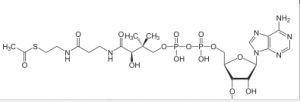
This is a critical step because it allows this molecule to be at the top of an energy hill and goes downhill in the subsequent reaction. pyruvate is a charged molecule so it cannot freely cross the mitochondrial membrane and in fact it must be transported across the membrane by an active transport process using a transport protein!!! CoA is derived from a B vitamin (Thiamine) thiamine deficiency causes Beriberi
The citric acid cycle also called the Krebs cycle or the tricarboxylic acid (TCA) cycle, takes place within the mitochondrial matrix
The cycle oxidizes organic fuel derived form pyruvate generating 1 ATP, 3 NADH, 1 FADH2 per turn
The mitochondria are the major site of ATP production in the dark but the chloroplast is the site of ATP production in the light.In the bacteria the actual enzymes that carry out this cycle are in the cytosol because they don’t have mitochondria and the plasma membrane of bacteria contains the enzymes and complexes that carry out oxidative phosphorylation.
The citric acid cycle
- The citric acid cycle has eight steps each catalyzed by a specific enzyme.
- The acetyl group of acetyl CoA joins the cycle by combining with oxaloacetate forming citrate.
- The next seven steps decompose the citrate back to oxaloacetate making the process a cycle.
The NADH and FADH2 produced by the cycle relay electrons extracted from food to the electron transport chain.
Steps of Krebs cycle:
During oxidative phosphorylation chemiosmosis couples electron transport to ATP synthesis.
- Following glycolysis and the citric acid cycle, NADH and FADH2 account for most of the energy extracted from food
- These two electron carriers donate electrons to the electron transport chain which power ATP synthesis via oxidative phosphorylation.
The pathway of electron transport
- The electron transport chain is in the cristae of the mitochondrion
- Most of the chain’s components are proteins, which exist in multiprotein complexes
- The carriers, alternate reduced and oxidized states, as they accept and donate electrons.
- Electrons drop in free energy as they go down the chain and are finally passed to O2 forming H2O
Electrons are transferred from NADH or FADH2 to the electron transport chain
Electrons are passed through a number of proteins including cytochromes (each with an iron atom) to O2.
The electron transport chain generate no ATP. The chain’s function is to break the large free–energy drop, from food to O2, into smaller steps that release energy in manageable amounts
Chemiosmosis: the energy-coupling mechanism
Electron transfer in the electron transport chain causes proteins to pump H+ from the mitochondrial matrix to the intermembrane space.H+ then moves back across the membrane passing through channels in ATP synthase.ATP synthase uses the exergonic flow of H+ to drive phosphorylation of ATP.This is an example of chemiosmosis the use of energy in H+ gradient to drive cellular work.The energy stored in a H+ gradient across a membrane couples the redox reactions of the electron transport chain to ATP synthesis.The H+ gradient is referred to as a proton – motive force, emphasizing its capacity to do work.
About40% of the energy in a glucose molecule is transferred to ATP during
cellular respiration,making about 38 ATP molecules.
Glucose oxidation ΔG = -686 kcal/mole.
ADP +Pi →ATP ΔG = 7,3 kcal/mol ⇒ 7,3x 38 = 277 kcal this make roughly
40 % of the total energy of Glucose.
Fermentation and anaerobic respiration enable cells to produce ATPwithout the use of oxygen
- Most cellular respiration requires O2 to produce ATP.
- Glycolysis can produce ATP with or without O2 (in aerobic or anaerobic conditions)
- In the absence of O2, glycolysis couples with fermentation or anaerobic respiration to produce ATP.
- Anaerobic respiration uses an electron transport chain with an electro – acceptor other than O2, for example sulfate.
- Fermentation uses phosphorylation instead of an electron transport chain to generate ATP.
Types of fermentation
- Fermentation consists of glycolysis plus reactions that generates NAD+ which can be reused by glycolysis.
- Two common types are alcohol fermentation and lactic acid fermentation.
- In alcohol fermentation, pyruvate is converted to ethanol in two steps with the first releasing CO2.
- Alcohol fermentation by yeast is used in brewing, wine making and baking.
- In lactic acid fermentation pyruvate is reduced by NADH forming lactate as an end product with no release of CO2.
- Lactic acid fermentation by some fungi and bacteria is used to make cheese and yogurt.
- Human muscle cells use lactic acid fermentation to generate ATP when O2 is scarce.
Lactate is recycled to pyruvate in the liver (cori cycle) so in this pathway, we have 2 ATP produced. This is a much less efficient pathway.
Fermentation and aerobic respiration (compared)
- Both processes, use glycolysis to oxidize glucose and other organic fuels to pyruvate.
- The processes have different final electron acceptors, an organic molecule (such as pyruvate or acetaldehyde) in fermentation and O2 in cellular respiration.
- Cellular respiration produces 38 ATP per glucose molecule, fermentation 2 ATP per glucose molecule.
- Obligate anaerobes, carry out, fermentation or anaerobic respiration and can not survive in the presence of O2.
- Yeast and many bacteria are facultative anaerobes, meaning that they can survive using either fermentation or cellular respiration.
- In a facultative anaerobe pyruvate is a fork in the metabolic road that leads to two alternative catabolic routes.Human muscles cells are facultative anaerobs.
The evolutionary significance of Glycolysis
- Glycolysis occurs in nearly all organisms.
- Glycolysis probably, evolved in ancient prokaryotes before there was oxygen in the atmosphere.
- Glycolysis and the citric AC cycle, connect to many other metabolic pathways.
- Glycolysis and the citric AC cycle, are major intersections to various catabolic and anabolic pathways.
The versatility of catabolism
- Catabolic pathways, funnel electrons from many kinds of organic molecules into cellular respiration.
- Glycolysis accepts a wide range of carbohydrates.
- Proteins must be digested to amino acids, amino acids can feed glycolysis or the citric acid cycle.
- Fats are digested to glycerol (used in glycolysis) and fatty acids (used in generating acetyl COA).
- Fatty acids are broken down by beta oxidation and yield acetyl COA.
- An oxidized gram of fat produces more than twice as much ATP as an oxidized gram of carbohydrate.
Biosynthesis (anabolic pathway)
- The body uses small molecules to build other substances.
- These small molecules may come directly from food, from glycolysis or from the citric acid cycle.
Regulation of cellular respiration via feedback mechanisms
- Feedback inhibition is the most common mechanism for control.
- If ATP concentration begins to drop, respiration speeds up, when there is plenty of ATP, respiration slows down.
- Control of catabolism is based mainly on regulating the activity of enzymes at strategic points in the catabolic pathway.
Chapter 8 : bioenergetics
Introduction to bioenergetics
Cellular respiration is composed of three topics:
- Redox reactions (oxidation-reduction)
- Electron transport chain
- Glycolysis
In fact living cells require energy from outside sources. Some animals obtain energy by eating plants and some others feed on other organisms that eat plants, and plants receive energy from sunlight. we can resume, the situation:
Energy flows into an ecosystem as sunlight and leaves as heat.
↓
Photosynthesis generates O2 and organic molecules which are used in cellular respiration.
↓
Cells use chemical energy stored in organic molecules to regenerate ATP, which powers work.
These Catabolic pathways resulting in production of ATP are exergonic (exergonic means energy is released during the process).
Cells do this by different ways.
- Fermentation is a partial degradation of sugars that occurs in the absence of O2 .
- Aerobic respiration is really cellular respiration: it consumes organic molecules and O2 and yields ATP.
- Anaerobic respiration is similar to aerobic respiration but consumes compounds other than O2 .
Redox reactions (oxidation and reduction) involves:
Transfer of electrons during chemical reactions and release energy stored in organic molecules.
The released energy is ultimately used to synthesize ATP.
The principle of redox
Chemical reactions that transfer electrons between reactants are called oxidation-reduction reactions, or redox reactions.
In oxidation, a substance loses electrons, or is oxidized.
In reduction, a substance gains electrons, or is reduced (the same amount of positive charge is reduced)
Example: NaCl → Cl- + Na+
Na= oxidized
Cl = reduced
We can wright it in a general way:
reducing agent + oxidizing agent → reduced agent + oxidized agent
The electron donor is called the reducing agent and the electron receptor is called the oxidizing agent.
Some redox reactions do not transfer electrons but change the electron sharing in covalent bonds.
An example is the reaction between methane and O2
Energy
During cellular respiration, the fuel (such as glucose) is oxidized, and O2 is reduced:
Oxygen is a very electro negative agent.
The glucose is the fuel of the organism but the reaction does not happen in one step as shown here and it happens during several steps, this is a very exergonic reaction and the ΔG =-686 Kcal/mol.
The glucose is around and O2 also, why there is no spontaneous combustion? Because the activation energy is high.
stepwise energy harvest via NAD+ and the electron transport chain.
-In cellular respiration, glucose and other organic molecules are broken down in a series of steps.
-Electrons from organic compounds are usually first transferred to NAD+ a coenzyme.
-As an electron acceptor,NAD+ functions as an oxidizing agent during cellular respiration.
-Each NADH (the reduced form of NAD+ ) represents stored energy that can be tapped to synthesize ATP.
CH3OH + NAD+ → NADH + CH2O + H+
-NADH passes the electrons to the electron transport chain.
-Unlike an uncontrolled reaction, the electron transport chain passes electrons in a series of steps instead of one explosive reaction.
-O2 pulls electrons down the chain in an energy-Yielding Tumble
-The energy yielded is used to regenerate ATP.
The stages of cellular respiration: A preview stages
Cellular respiration has three stages:
- Glycolysis (breaks down glucose into two molecules of pyruvate)
- The citric acid cycle (completes the breakdown of glucose)
- Oxidative phosphorylation (accounts for most of the ATP synthesis)
Glucose→NADH→electron transport chain→H2O + CO2
Glycolysis is occurring in the cytosol.
And when pyruvate is produced, it enters the citric acid cycle which is going on inside of the mitochondria.
The process that generates most of the ATP is called oxidative phosphorylation because it is powered by redox reactions.
Oxidative phosphorylation, accounts for almost 90% of the ATP generated by cellular respiration.
A smaller amount of ATP is formed in glycolysis and the citric acid cycle by substrate-level phosphorylation.
Glycolysis harvests chemical energy, by oxidizing glucose to pyruvate.
Glycolysis (“splitting of sugar”) breaks down glucose, into two molecules of pyruvate.
Glycolysis occurs in the cytoplasm and has two major phases:
- Energy investment phase
- Energy payoff phase
Chapter 7: enzyme substrate complex
Substrate specificity of enzymes
-The reaction that an enzyme acts on is called the enzyme’s substrate.
-The enzyme binds to its substrate forming an enzyme-substrate complex
-The active site is the region on the enzyme where the substrate binds.
-Induced fit of a substrate brings chemical groups of the active site into positions that enhance their ability to catalyze the reaction.
in general enzymes are really big molecules their active site is typically small so the enzyme structure is designed to create the architecture that’s necessary to place individual amino acids from the polypeptide segmentes in the right place in 3D space in the active site so that substrates combine and chemistry can occur and so we need all that extra protein to create the structure that’s essential for insuring that the active site is formed correctly and finally induced feet so this is the idea:
Catalysis in the enzyme’s active site
In an enzymatic reaction, the substratet binds to the active site of the enzyme.
The active site can lower the EA barrier:
.) By orienting substrate correctly
.) Straining substrate bonds.
.) Providing a favorable micro environment
.) Covalently bonding to the substrate
Binding energy contributes to catalysis in multiple ways:
– Entropy reduction
– Substrate desolvation
– Inducted fit
Enzyme regulation
Enzyme cofactors
Enzyme inhibitors
Allosteric regulation
1) Cofactors help enzymes to function efficiently
2) Enzymes inhibitors bloc activity through different mechanism :
Competitive, Non competitive
3) Enzyme can be regulated by structural changes
Enzymes can have a really huge effect on reaction rate (the rate enhancement; that’s achieved by an enzyme is more than million X)
Enzymes enhance rates by a very large number .
This is the concept of lock and key.
The lock and key concept for the enzymes is that you have an enzyme that has a binding site for a substrate that is a perfect fit.
And this idea was proposed by Mill Fisher, famous chemist and the idea was that enzymes have incredible specificity for their substrates because they have a binding site that matches that substrate exactly in a chemical sense and this model change chemical reaction so dramatically, and we know that enzyme can have a really huge effect en reaction rates.
This model doses not explain (enzymes that works are structures that stabilize the substrate in the transitional state. If the enzyme binds too well, it is not a good enzyme because it does not help the substrate to approache the transitional state which is a high energy state) .That was the problem with the lock and key model.
In 1950 (nineteen fifties) Dan Coshland proposed a modification to the lock and key model; which he called induced fit.
That means the binding site rather than being an exact match to the structure of the substrates (that simply the lock and key model). It has a shape that is close but not exactly the same as for the substrate. But when the substrate binds there is a structural change that is induced in the enzyme. That actually pushes the substrate closer to the structure. That has in the transitional state.
The difference between lock and key and induced fit is that.
Hexokinase is a beautiful structural example where we see that the substrate coming in and the enzyme closing down around it and inducing a change in the enzyme an substrate binding and then enhances the rate at which the substrate is converted to product.
Cofactors
Cofactors are non-protein enzyme helpers .
Cofactors may be inorganic (such as a metal in ionic form) or organic. An organic cofactor is called coenzyme
Coenzymes include vitamins. Many enzymes have helpers
Cofactors:
1) Tightly bound cofactors are called prosthetic groups
(They are almost like extensions of the protein itself they may not be covalently attached but they are very tightly associated with the enzyme and the enzyme would not be efficient without that group and so that’s what we call prosthetic group)
2) Loosely bound cofactors are called coenzymes
3) An active enzyme lacking the cofactors is called an Apo enzyme the complete enzyme with its cofactor is called a holoenzyme.
Cofactors:
Organic cofactors often share a common chemical feature; can we see it?
Coenzyme A
If you pay attention, you will notice that.
They all have adenine ( adenine ring)
Cofactors:
NADH is reversibly oxidized to NAD during electron transport in cells.
Many enzymes contain common structural features that bind NAD/NADH
Regulation of enzyme activity
helps control metabolism
Chemical chaos would result if a cell’s metabolic pathways were not tightly regulated.
A cell does this by switching on or off the genes that encode specific enzymes or by regulating the activity of enzymes
Feedback inhibition
In feedback inhibition, the end product of a metabolic pathway shuts down the pathway.
Feedback inhibition prevents a cell from wasting chemical resources by synthesizing more product than is needed.
Exergonic VS. endergonic reactions
Exergonic reactions release energy to the system and exergonic reactions proceed spontaneously.
Endergonic reactions absorb energy from the system and endergonic reactions are not spontaneous.
ATP Powers Cellular Work by coupling exergonic reactions to endergonic reactions.
A cell does three main kinds of work:
– Chemical
– Transport
– Mechanical
To do work cells manage energy resources by energy coupling. The use of an exergonic process to drive an endergonic one.Most energy coupling in cell is mediated by ATP.
The structure and hydrolysis of ATP
ATP (adenosine triphosphate) is the cell’s energy shuttle.
ATP is composed of ribose (a sugar),adenine (a nitrogenous base) and three phosphate groups.
The bonds between the phosphate groups of ATP’s tail can be broken by hydrolysis.
Energy is released from ATP when the terminal phosphate bond is broken.
This release of energy comes from the chemical change to a state of lower free energy: not from the phosphate bonds themselves.
ATP Hydrolysis
How ATP Performs work
The three types of cellular work (mechanical, transport and chemical) are powered by the hydrolysis of ATP.
In the cell, the energy from the exergonic reaction of ATP hydrolysis can be used to drive an endergonic reaction.Overall, the coupled reactions are exergonic.
ATP drives endergonic reactions by phosphorylation. Transferring a phosphate group to some other molecule, such as a reactant.The recipient molecule is now phosphorylated.
The regeneration of ATP
ATP is a renewable resource that is regenerated by addition of a phosphate group to adenosine diphosphate (ADP).
The energy to phosphorylate ADP comes from catabolic reactions in the cell.
The chemical potential energy temporarily stared in ATP drives most cellular work.
Chapter 6 : cellular metabolism
Cellular metabolism
– Metabolic path ways
– Thermodynamics
– Free energy
– Introduction to enzymes
Overview: the energy of life
The living cell is a miniature chemical factory where thousands of reactions occur.The cell extracts energy and applies energy to perform work. Some organism even convert energy to light as in bioluminescence.
Organization of the chemistry of life into metabolic pathways
A metabolic pathway begins with a specific molecule and ends with a product. Each step is catalyzed by a specific enzyme.Some metabolic pathways break down molecules. Catabolic pathways release energy by breaking down complex molecules into simpler compounds.
Cellular respiration, the breakdown of glucose in the presence of oxygen, is an example of a pathway of catabolism. Some metabolic pathways create molécules. Anabolic pathways consume energy to build complex molecules from simpler ones.The synthesis of protein from amino acids is an example of anabolism.
Bioenergetics is the study of how organisms manage their energy resources .Energy is the capacity to cause change .Energy exists in various forms some of which can perform work:
Kinetic energy is energy associated with motion. Heat (thermal energy) is kinetic energy associated with random movement of atoms or molecules.
Potential energy is energy that mater possesses because of its location or structure. Chemical energy is potential energy available for release in a chemical reaction.Energy can be converted from one form to another.
The laws of energy transformation:
Thermodynamics is the study of energy transformation.A closed system, such as that approximated by liquid in a thermos, is isolated from its surroundings.In an open system, energy and matter can be transformed between the system and its surroundings. Organisms are open systems.
The first law of thermodynamics
According to the first law of thermodynamics, the energy of the universe is constant: Energy can be transferred and transformed, but it cannot be created or destroyed. The first low is also called the principle of conservation of energy.
The second law of thermodynamics
During every energy transfer or transformation, some energy is unusable and is often lost as heat. According to the second law of thermodynamics ,every energy transfer or transformation increases the entropy (disorder) of the universe.
Living cells unavoidably convert organized forms of energy to heat.Spontaneous processes occur without energy input, they can happen quickly or slowly. For a process to occur without energy input, it must increase the entropy of the universe.
Biological order and disorder
Cells create ordered structures from less ordered materials. Organisms also replace ordered forms of matter and energy with less ordered forms. Energy flows into an ecosystem in the form of light and exits in the form of heat.Evolution increases order in organisms locally, but increases disorder in the universe so the second law is not violated.
Equilibrium and metabolism
Reaction in a closed system eventually reach equilibrium and then do no work. Cells are not in equilibrium, they are open system experiencing a constant flow of materials. A defining feature of life is that metabolism is never at equilibrium.A catabolic pathway in a cell releases free energy in a series of reactions. The free energy change of a reaction tells whether or not the reaction occurs spontaneously.
Biologists want to know which reactions occur spontaneously and which requires input of energy.To do so, they need to determine energy changes that occur in chemical reactions.
A living system’s free energy is energy that is available to do work when temperature and pressure are uniform as in a living cell.
Free energy change ( ΔG )
The change in free energy (ΔG) during a process is related to the change in enthalpy or change in total energy (ΔH ), change in entropy (ΔS ) and temperature in Kelvin (T):
ΔG = ΔH – T ΔS
Only process with a negative ΔG are spontaneous. Spontaneous processes can be harnessed to perform work.Free energy stability and equilibrium. Free energy is a measure of a system’s instability its tendency to change to a more stable state. During a spontaneous change, free energy decreases and the stability of a system increases. Equilibrium is a state of maximum stability. A process is spontaneous and can perform work only when it is moving toward equilibrium.
Enzymes
Enzymes (“in yeast”) are the chemical reaction catalysts of biological systems. Most enzymes are proteins and they often use metal ions or prosthetic groups like vitamins to assist catalysis. Many inherited genetic disorders result from a defect or even a total absence of a particular enzyme, or excessive activity of an enzyme. Measurement of enzyme activities in body fluids is important in diagnosing various illnesses.Furthermore many drugs act by altering the activities of enzymes. And enzymes are practical tools in the laboratory.
Enzymes speed up the rates of biochemical reactions. The active site of an enzyme is usually a cleft or pocket where chemistry takes place. A molecule that binds in the active site and is acted upon by the enzyme is called a substrate. As simple equation for an enzyme catalyzed reaction can be written:
E + S ↔ES ↔ EP ↔ E + P
Where E is enzyme, S is substrate , P is product
Enzymes do not alter the reaction equilibrium but they alter the forward and reverse reaction rates. Enzymes remains unchanged after the reaction
Some examples of enzymes catalyzed rate enhancements:
Carbonic anhydrase 10000000 X ,
Thriose phosphate isomerase 1000000000 X ,
Carboxypeptidase A 1000000000000 X
Comparison of catalyzed VS uncatalyzed reaction , the activation energy of the reaction is lower when catalyzed by an enzyme .
One idea about how enzymes work is that they bind to the transition state better than do substrate or product stabilizing the transition state.
This reaction starts with a substrate having a force energy value and goes to a barrier (calls the transition stats) and go down to form the product and in this reaction the product is at a lower force energy than the reaction this is a spontaneous reaction but may be a very slow reaction in fact many reaction in biology are very slow and we need enzymes to speed up the rates.
We know that enzymes lower the energy of the transition stats and we will see how the enzymes can do that.The equilibrium constant for a reaction is just the ratio of the product over substrate : K = product/substrate
Enzymes speed up metabolic reaction by lowering energy barriers
-A catalyst is a chemical agent that speeds up a reaction without being consumed by reaction.
– An enzyme is a catalytic protein
-Hydrolysis of sucrose by the enzyme Sucrase is an example of an enzyme-catalyzed reaction :
That is a spontaneous reaction in the sense that we could mix up (put) sucrose in to water and wait enough to see the break down to its components. But we must wait really long time (the spontaneous reaction is not a fast reaction). We add enzyme and we can quickly (probably in seconds )see the reaction is speeded up by the enzyme.These enzymes are very specific. for example if we incubate sucrase with other disaccrides like maltose it’s not going to be able to cleave maltose into its components ! and this is another aspect of the enzymes, they are very very specific.
The activation energy barrier
– Every chemical reaction between molecules involves bond breaking and bond forming
-The initial energy needed to start a chemical reaction is called the free energy of activation or activation energy (EA)
-Activation energy is often supplied in the form of heat from the surroundings.
How enzymes lower the EA barrier?
-Enzymes catalyze reactions by lowering the EA barrier.
-Enzymes do not affect the change in free energy (ΔG), (instead they hasten reactions that would occur eventually szpontaneously).
Substrate specificity of enzymes
– The reactant that an enzyme acts on is called the enzyme’s substrate.
– The enzyme binds to its substrate forming an enzyme-substrate complex
-The active site is the region on the enzyme where the substrate binds.
-Induced fit of a substrate brings chemical groups of the active site into positions that enhance their ability to catalyze the reaction.
In general enzymes are really big molecules, their active site is typically small so the enzyme structure is designed to create the architecture that’s necessary to place individual amino acids from the polypeptide segments in the right place in 3D space. In the active site so that substrate combine and chemistry can occur and so we need all that extra protein to create the structure that’s essential for insuring that.
Catalysis in the enzyme’s active site
In an enzymatic reaction, the substraite binds to the active site of the enzyme.
The active site can lower an EA barrier by:
.) orienting substrates correctly
.) Straining substrate bonds.
.) Providing a favorable micro-environment
.) Covalently bonding to the substrate
Binding energy contributes to catalysis in multiple ways:
– Entropy reduction
– Substrate desolvation
– Inducted fit
Exergonic VS. endergonic reactions
-Exergonic reactions release energy to the system. Their ΔG <0 and exergonic reactions proceed spontaneously.
-Endergonic reactions absorb energy from the system. Their ΔG>0 and endergonic reactions are not spontaneous.
ATP Powers Cellular Work by coupling exergonic reactions to endergonic reactions.
To do work cells manage energy resources by energy coupling. The use of an exergonic process to drive an endergonic one.
Most energy coupling in cells is mediated by ATP.
The structure and hydrolysis of ATP (adenosine triphosphate) which is the cell’s energy shuttle.
ATP is composed of ribose (a sugar) ,adenine (a nitrogenous base) and three phosphate groups.
The bonds between the phosphate groups of ATP’s tail can be broken by hydrolysis.
Energy is released from ATP when the terminal phosphate bond is broken.
This release of energy comes from the chemical change to a state of lower free energy, not from the phosphate bonds themselves.
How ATP Performs work
The three types of cellular work (mechanical, transport and chemical) are powered by the hydrolysis of ATP.
In the cell, the energy from the exergonic reaction of ATP hydrolysis can be used to drive an endergonic reaction. Overall, the coupled reactions are exergonic.
ATP drives endergonic reactions by phosphorylation, Transferring a phosphate group to some other molecule, such as a reactant.The recipient molecule is now phosphorylated.
The regeneration of ATP
ATP is a renewable resource that is regenerated by addition of a phosphate group to adenosine diphosphate (ADP).
The energy to phosphorylate ADP comes from catabolic reactions in the cell.
The chemical potential energy temporarily stored in ATP drives most cellular work.
Chapter 5 : Microbial genetics and evolution
Microbiology is the study of single celled creatures or organisms. They are divided in ,Eukaryotes and Prokaryotes
Eukaryotes : Fungi ,Protozoa
Prokaryotes : Bacteria,Archie
Because bacteria are most diverse collection of organisms, it is very hard to say something universally about bacteria. So, this discussion can be inexact concerning all bacteria.
Generally, bacteria are small microorganismes (eg: E coli measures approximately 0,5 in width by 2 μm in length). They have one chromosome, generally circular DNA molecule, but they are very diverse.
Bacteria can be represented schematically:
The center is the nucleoid which is a single chromosome in all bacteria surrounded by cytoplasm, there is an inner membrane and a rigid cell wall.
And some bacteria contain another membrane on the outside (50%) = outer membrane (gram stain is on outer membrane).
Bacteria are divided by fission: for ex E coli is divided every 20’ ⇒1000 (10 generations) in 200′ , 1000000 (20 générations) in 400′ ……….
Bacteria has one DNA molecule and it is typically a circle. And in every case, there is a point on that molecule, where the DNA replication initiates. it is called origin of replication and when it is initiated it progresses in two directions and go around to meet each other at the bottom and at that moment the chromosome is completely replicated.
The speed of DNA polymerase of E coli is 1000 base pairs/sec ,The error rate is 1 Base/generation.
Now, the E coli DNA has 4639221 base pairs ,How long E coli takes to replicate his chromosome? = 70 minutes .It divides par 20 minutes but replicates its DNA per 70 minutes!! How it is possible?? Part of the response is bacteriophage
The DNA is really pressurized in the head of phage ,(Pressure = 6 mega Pascale = 60 atmosphere remember that with a champagne bottle after shaking there is 6 atmospheres).
Phage life style
The second mechanism is shown by lambda phage ,When lambda penetrates, it will see the conditions inside the bacteria; if conditions are bad so it integrates bacterial DNA and stays there until the conditions change.
So, the decision making between giving lytic or lysogenic, is probably the most well understood, of molecular switches in all of biology
In bacteria there is three kinds of exchange of DNA
1) Transformation
What haemophilus will do in order to explore evolutionary space, is it take up DNA from a solution : if that DNA comes from another haemophilus (there are changes in DNA and some are advantageous but some are not).
When it takes DNA from outside it see if it is advantageous or not so integrates or not.
What haemophilus has on it’s surface is a receptor protein that recognizes 11 base pairs sequences of DNA and this is common in haemophilus chromosomes and is uncommon an other chromosomes.
And how it can knows to take a good DNA and not a bad one? Normally, the 11 pairs are different from the phage’ s chromosomes, but sometimes they are the same.The second protection is: restrication-modification system. Each bacteria has an enzyme in it that recognizes a particular sequence of DNA and simply clives that sequence: 4 bases/sequences, 5 bases pairs/sequence, 6 or 8 bases pairs /sequences
CGATCG GCTAGC
When DNA is methylated (CH3 ) the enzyme doEs not cut but otherwise it cut, so if it comes from haemophilus it is methylated, but in viruses and phages it is not.
2) Conjugation
Plasmids is small circular DNA molécules ,F= fertility plasmid .How doses that work?
3) Transduction:
Chapter 4 : Mendelian genetics
Mendel crossed purple flowers (peas) with white flowers (peas) and he got purple flowers for all of the first generation. Now we should know that the first cross in any genetic cross is called the P cross or the parental cross and then the offspring’s of that are called the F1 or filial 1. When he crossed these purple flowers with themselves, what he got was a 3 to 1 ratio of purple to white flowers peas (just as a crystal white as that first white was in the beginning). And so what he said was that there was a character or trait that was passed through, and for purple flowers this character could be PP and for the white flowers it could be pp so all of F1 generation will be Pp .
What are Mendel’s laws?
1)Segregation:If we have a gene type Pp the probability of P an p is 50%. This separation of genes is called segregation. (random chance of having P or p)
2) Independent assortment: That means the separation of genotypes do not influence each other, so they are independent (But sometimes it is not true because two genes are at same chromosomes).
Problems:
1) A coin is flipped 4 times and comes up heads each time. What is the probability that the next coin flip will come up heads?
2) Classify the following as heterozygous or homozygous: RR, Rr, YY, Yy RR
3)What is the phenotype of the following Yy, Rr, yy, YyRr
4)What is the probability of Rr X Rr producing wrinkled seeds?
5)What is the probability of Yy X yy producing green seeds?
6)What is the probability that Rr Yy X RR Yy would produce Rr Yy?
Punnett square
The Punnett square is often over used as just a quick way to solve genetic problems without really understanding it. What’s ‘going on with the genetics? The two sides of Punnett square represent the alternatives after meiosis. In other words you have a brunch of genes and you give half of those genes to a sperm or an egg. And that happens trough meiosis and so the organization of those gametes. In this case it’s just a monohybrid cross, are going to be on either side of this, just like a flip of a coin. This would be for one parent. And then this would be the other parent on the other side. And so what are in boxes on a Punnett square stand for? They simply stand for all the alternatives that could occur if we had mating between each of these different gametes. And so let’s get to some examples and hopefully that will help. So, we are going to start with a monohybrid cross. A monohybrid cross is simply a cross that is looking at one trait. And so let’s say were crossing purple flowers that are homozygous purple with those that are homozygous white flowers. In other words this is the dominant trait and the other one is a recessive trait. And so if you look, at the parents what you Want to do first of all, is figure out what are the possible gametes. That could be produced in meiosis. What does it mean? It can only give one thing, it can only give a big P or that dominant allele. And so if you’re doing a problem like this you don’t need a big Punnett square. The other parent is pp and he can give only a p because the p’s are the same.
We see that there are two possibilities for each parent. And we have to show both of those possible gametes of meiosis. There is a 1 to 2 genotypic ratio PP,pp-homo and Pp,Pp-hetero But a 3 to 1 ratio for phenotype, that means three purple to 1 white. Now let’s see an incomplete dominance; a snapdragon would be an example of that. A snapdragon has two genes; if it has a red gene and a white gene, then it’s going to be pink. And so this one, in this case we will have 1 to 2 ratio in genotype but also in phenotype (co dominance or incomplete dominance)
And now we will try with a sex linked chromosomes or a x linked chromosomes. Ex: is a color blindness gene and the father is normal.
| X | Y | |
| X | XX | XY |
She is not color blind because she has an efficient gene and she is only carrier. So we have a color blind male and a carrier female, a normal female and a normal male.
Now let’s have a look on dihybrid cross Rr Yy Rr Yy, R= round pea seeds Y=yellow seeds If it is recessive that stands for wrinkled and if it is a little y that stands for green and so we are looking at a dihybrid, so that means two traits. We’re looking at seed’s shape (round or wrinkled). And seed’s color, yellow or green. So now we have to do a dihybrid cross. And so the tendency is we look at this parent. We can see that there are four letters and there are four boxes and then you just simply write them out. Big R little r, big Y little y and then you get a weird answer and you don’t know what to do with it. Rr Yy What are possibility of gametes? RY, Ry, rY, ry We can do the same with other parent
These nine will be round and yellow, because they are dominant and when we have dominant genotype the phenotype will be the same (round and yellow); four will be (wrinkled and yellow) and one will be green and wrinkled.
Human genetic disorders: Human genetic disorders caused by non-disjunction: Trisomy 21 (Down’s syndrome) ,klinefelters’s syndrome , Xxx metafemals syndrome. Can we survive with only one x or y chromosome? so we will study specific diseases
1) Sickle cell anemia which is a genetic blood disorder (a base substation in a single point). It causes red blood cells to be misshapen. This abnormality is frequent in Africa and Mediterranean regions and in south and central America (where malaria have been prevalent) The alleles for this trait exhibit co-dominance Bn=normal Bs=sickle
| genotype | phenotype |
| BnBn | N |
| BnBs | Normal and sickle cells(sickle trait) |
| BsBs | Sickle cell anemia |
With sickle trait the people have no abnormal episode and it is a good defense against malaria.
2) Huntington’s disease, a genetic disorder du to an abnormal gene on chromosome n° 4. The faulty gene that causes Huntington’s disease is found ( a normal copy of the gene produces huntingtin, a protein. The faulty gene is larger than it should be and produces a larger form of huntingtin)
Some of our brain cells are sensitive to the larger form of huntingtin – it undermines their function and eventually destroys them. Scientists are not sure exactly how this happens. Scientists have figured out why a faulty protein accumulates in cells everywhere in the bodies of people with Huntington’s disease, but only kills cells in the part of the brain that controls movement, causing negligible damage to tissues elsewhere. Huntington disease is unique because it is a dominant gene (dominant genes don’t have to be common in fact and Huntington is really rare ) Why this disease is interesting? If the gene is dominant and the patient dye, how can he passe the gene to the others? The Huntington disease dose not become symptomatique until age 40; so the patient will have time to passe the gene.
3) Hemophilia: The gene for Haemophilia is carried on the X sex chromosome (females are XX; males are XY). A man with Haemophilia passes the faulty gene to his daughters who then carry this gene and may pass the condition onto their sons. A man with Haemophilia does not pass the faulty gene onto his sons because they receive a copy of his Y chromosome (their X chromosome comes from the mother).
Men are affected because the faulty gene on their X chromosome lacks the necessary instructions to produce the clotting factor which causes blood to clot. Women are usually unaffected because they have two X chromosomes and the working copy of the gene tends to override the faulty copy. However, about a third of female carriers have low clotting factor levels and may be mildly affected.
If a carrier mother decides to have children, all her daughters have a 50% (1 in 2) chance of being a carrier. This depends on whether they receive the X chromosome containing the faulty or the working gene. Sons also have a 50% (1 in 2) chance of inheriting the faulty or the working gene. If they inherit the faulty gene, they will have Haemophilia as they do not have a second X chromosome to override the faulty copy.
About 30% of people with the condition have no family history of Haemophilia. They are probably affected because of a spontaneous genetic mutation which took place in the egg or sperm before fertilisation.
Chapter 3: eukaryote cell division
Cell division is incredibly tightly regulated (cancer is described as an unregulated cell growth).In respect tothe cell division,there is a machinery that is a transitory state and this machinery is renewed every cell cycle.
Key components of this machinery are:
1) Spindle: is made of microtubules or cytoskeleton, centrioles, kinetochores and contractile ring.
2) And this machinery is controlled by a control system which integrates signals from growth and division.
These signals are:
a) Cell division kinases (CDK)
b) Each kinase has an activity that is controlled by a cycline (regulatory subunit of CDK) and the activity
of these 2 systems is controlled by a third system which is;
c) regulated destruction mechanism.
Cell division is highly regulated:
The cells are dividing by 8 minutes (but neurons by 100 years) but the typical cells (eg liver cells) divides
1/year, and the cells of gut are dividing 1/day .
Cell division
1) Cell division requires partitioning of organelles for this there is 3 stratégies :
A) Abundant organelles like ribosomes peroxisomes ( 1/2 goes in one side and 1/2 to the other side)
B) Mitochondria chloroplast: these are ancient captured bacterias and conserves their own mechanism
of division .So chloroplast and mitochondria split during cell division .
C) Golgi and endoplastic reticulum becomes small vesicles and then after cell division they come back
together and reform Golgi and ER
D) Centrosome = centriole is the poorly understood in eukaryotes cells.
Centriole template his own replication so we need a centriole to make a new centriole (centriole play a key
role in mitotic spindle apparatus and centrioles are structures, that DNA contemplate his replication.
G1 and G0: G1 is the phase in which the cell ask herself “am I big enough to divide” are there enough food?
There are also the + or – factors from other cells or the environment.And if the final decision is not
to divide the cell goes back to G0 phase where there is no division.
S phase : the phase in which nuclear DNA replication and mitochondrial DNA replication occurs .
G2: another decision making phase is G2: cell verify if every single genome has been replicated or not. If it has not, there is a mechanism that ask the cell to halt in G2 until the last nucleotide could be replicated. G2 will be prolonged until the cell has all needed to go to M.Another control point is to see if each kinetochore archived bipolar spindle attachment.
M: and finally mitosis happens:
Chromosomes consist of one DNA molecule and the proteins associated with that and we must not underestimate the importance of the proteins and the mass of proteins associated with the DNA (their mass exceeds the mass of DNA).
There are critical landmarks on the chromosomes and the most important is the centromere. The centromere is the point at which the chromosome attaches to the spindle apparatus to allow chromosome segregation that is it’s only function; but at this point there is a very complete protein structure (fifty different proteins called connect cord. So, the connect cord is the structure that assembles at this point to archive protein segregation).
We know that there are the origin of replication on DNA, result in eukaryote cells there are multiple origins of replication.
At the very end of chromosomes, there are specialized structures called telomerase.
Telomerase the enzyme which intervene in the replication of telomere.
Chromosomes have lots of genes collectively our chromosomes.
How 22250 genes which make proteins as well as RNA
Ploidy = number of sets of chromosomes
Haploid = organisms who have one set of chromosomes
Diploid = organisms who have two sets of chromosomes
Triploid = organism who have three sets of chromosomes
Tetraploid = organism who have four sets of chromosomes
Hexaploid = organism who have six sets of chromosomes
Octaploid = organism who have eight sets of chromosomes
The letter N is used to refer to number of chromosome haploid cell.
So, for humans and potatoes N=23 and as we are diploid, so we have 2 x 23 chromosomes
C value refers to the contact of DNA (amount of DNA in the cell)
N is a discontinuous functions but the C value is the continuous function.
So, the amount of DNA in a diploid nucleons is 2 C in G1 and the amount of C in G2=4C
But in G2 the number of chromosomes dose not change.
How do we measure DNA content?
We can do that because of amazing machine
FACS= fluorescent activated cell sorter or cell scanner
The fluorescent dye that steins DNA but it stains DNA proportionately to the DNA reserve
Chapter 2:the structure of biological membranes
The plasma membrane:Is the boundary that separates, the living cell, from its surrounding and exhibits selective permeability, allowing some substances to cross it more easily than others.
Cellular membranes are fluid mosaics of lipids and proteins
– Phospholipids are the most abundant lipid in the plasma membrane
-Phospholipids are amphipathic molecules, containing hydrophobic and hydrophilic regions.
-The fluid mosaic model states that a membrane is a fluid structure whith a “mosaic” of various proteins embedded in it.
Freeze fracture experiments
– Freeze fracture studies of the plasma membrane supported the fluid mosaic model.
– Freeze fracture is a specialized preparation technique that splits a membrane along the middle of the phosphatide bilayer.
The fluidity of membranes
– Phospholipids in the plasma membrane can move whithin the bilayer
– Most of the lipids and some proteins drift laterally.
– Rarely does a molecule flip-flop transversely across the membrane
Membrane proteins and their functions:
-Peripheral proteins are bound to the surface of the membrane
– Integral proteins penetrate the hydrophobic core
-Integral proteins that span the membrane are called transmembrane proteins.
-The hydrophobic regions of an integral proteins consist of one or more stretches of nonpolar amino acids.
Six major functions of membrane proteins:
– Transport
– Enzymatic activity
– Signal transduction
– Cell-cell recognition
– Intercellular joining
– Attachment to the cytoskeleton and extra cellular matrix
Synthesis and sidedness of membranes
– Membranes have a distinct inside and outside faces
-The asymmetrical distribution of proteins, lipids and associated carbohydrates in the plasma membrane is determined when the membrane is built by the ER and Golgi apparatus.
Membrane structure results in selective permeability
– A cell must exchange materials with its surrounding, a process controlled by the plasma membrane
– Plasma membranes are selectively permeable, regulating the cell’s molecular traffic
– Hydrophobic (nonpolar) molecules such as hydrocarbons, can dissolve in the lipid bilayer and pass through the membrane rapidly
– Polar molecules such as sugars do not cross the membrane easily
Passive transport: diffusion across a membrane with no energy investment
1)Diffusion is the tendency for molecules to speed out evenly into the available space.
2)Although each molecule moves randomly, diffusion of a population of molecules may exhibit a net movement in one direction
3) At dynamic equilibrium, as many molecules cross one way as cross in the other direction.
Effects of osmosis on water balance
1) Osmosis is the diffusions of water across a selectively permeable membrane.
2)Water diffuses across a membrane from the region of lower solute concentration to the region of higher solute concentration.
Water balance of cells without walls. Tonicity is the ability of a solution to cause a cell to gain or lose water.
Isotonic solution: solute concentration is the same as that inside the cell, no net water movement across the plasma membrane
Hypertonic solution: solute concentrations greater than that inside the cell; cell loses water
Hypotonic solution: solute concentration is less than that inside the cell; cell gains water.
Transport proteins: Transport proteins allow passage of hydrophilic substances across the membrane.
Some transport proteins, called channel proteins have a hydrophilic channel that certain molecules or ions can use as a tunnel.
Channel proteins called Aquaporin facilitate the passage of water.
Facilitated diffusion, passive transport aided by proteins, facilitated diffusion : transport proteins speed the passive movement of molecules across the plasma membrane.
Channel proteins provide corridors that allow a specific molecule or ion to cross the membrane
Channel proteins include:
Aquaporin, to facilitate diffusion of water ,Ion channels that open or close in response to a stimulus (gated channels)
Active transport uses energy to move solutes against their gradients:Facilitate diffusion is still passive because the solute moves down its concentration gradient.Some transport proteins however can move solutes against their concentration gradient.Active transport moves substances against their concentration gradient.Active transport requires energy usually in the form of ATP.Active transport is performed by specific proteins embedded in the membranes.
Ion pumps maintain membrane potential:Membrane potential is the voltage difference across a membrane. Voltage is created by differences in the distributions of positive and negative ions.
Two combined forces collectively called the electrochemical gradient, drive diffusion of ions across a membrane. A chemical force (the ion’s content ratio gradient),An electrical force (the effect of the membrane potential on the ion’s movement) An electro genic pump is a transport protein that generates voltage across a membrane. The sodium potassium pump is the major electro genic pump of animal cells.The main electro genic pump of plants, fungi and bacteria is a proton pump.µ
Bulk transport by exocytosis and endocytosis
Small molecules and water enter or leave the cell through the lipid bilayer or by transport proteins
Large molecules, such as polysaccharides and proteins, cross the membrane in bulk via vesicles.
Bulk transport requires energy.
In exocytosis transport vesicles migrate to the membrane, fuse with it and release their contents.
In endocytosis the cell takes in macromolecules by forming vesicles from the plasma membrane.
Chapter 1: the fundamental units of life
All organisms are made of cells
– The cell is the simplest collection of matter that can live (reproduce)
– Cell structure is correlated with cellular function.
– All cells are related by their descent from earlier cells.
Viruses are considered not to live because their reproduction depends on other organisms.
How do we study cells?
Normally, cells are too small to be seen by eye so we must use microscopes and other techniques like biochemistry to study them
Light microscope : the best magnification 1/1000
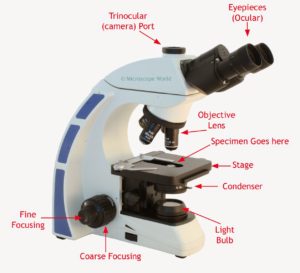
The quality of the image depends on 3 things
1) Magnification : rates of an object’s image size to its real size
2) Resolution : basically it means the clarity of the image (the minimum size visible)
3) Contrast
Electron microscopy
– Two basic types of electron microscopes are used to study subcellular structures
1) Scanning electron microscopes focus a beam of electrons outs the surface of a specimen, providing images that look there dimensional.
2) Transmission electron microscopes :
Focus a beam of electrons through a specimen (TEMS), this kind of electron microscope is used to study the internal structure of cells.
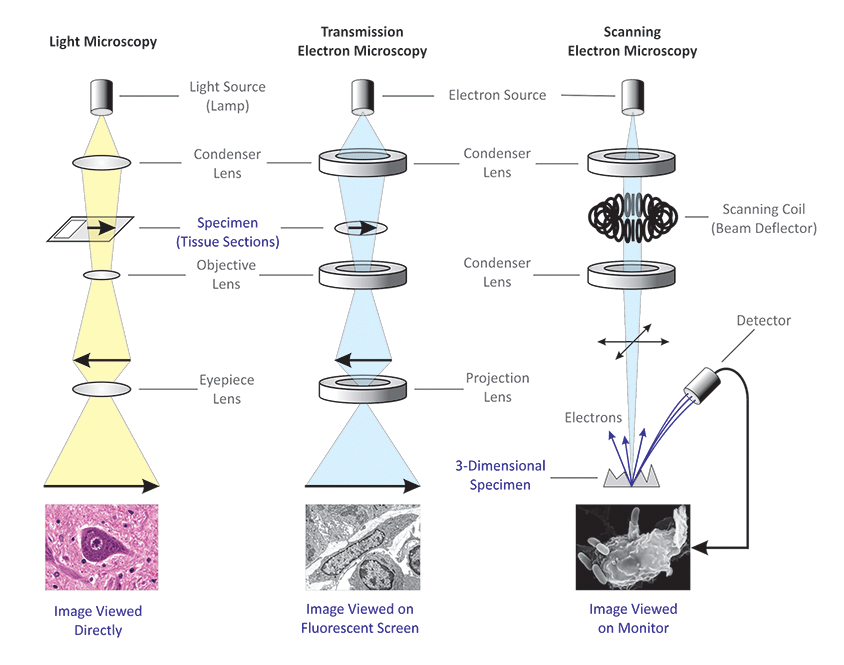
Example of scanning and transmission electron microscopy.


Cell fractionation
– Cell fractionation : one takes cells apart and separate the major organelles from one anther
– Ultra centrifugation fractionate cells into their component parts.
– Cell fractionation enables scientists to determine the functions of organs
– Biochemistry and cytology help correlate cell function with structure.
Comparing prokaryotic and eukaryotic
– Basic features of all cells
.) Plasma membrane
.) Semifluid substance cells cytosol
.) Chromosomes (carry genes)
.) Ribosomes (make proteins)
– The structural and functional unit of every organism is one of two types of cells : prokaryotic or eukaryotic
– Only organisms of the domains bacteria and arches
– consist of prokaryotic cells
– fungi, animals and plants all consist of eukaryotic cells.
Prokaryotic cells
– No nucleus
– DNA is an unbound region called the nucleoid
– No membrane bound organ cells
– Cytoplasm bound by the plasma membrane

– DNA is in a nucleus that is bounded by a membranous nuclear envelope
– Cytoplasm in the region between the plasma membrane and nucleus
– Eukaryotic cells are generally much larger than prokaryotic cells
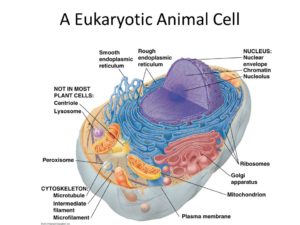

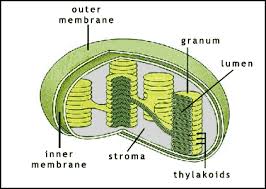
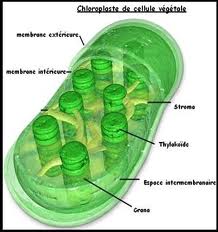
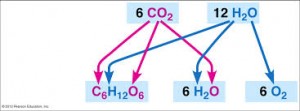
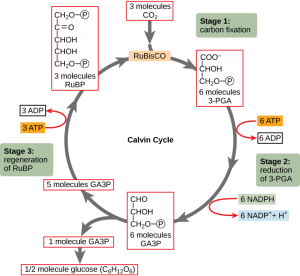

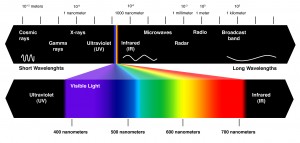

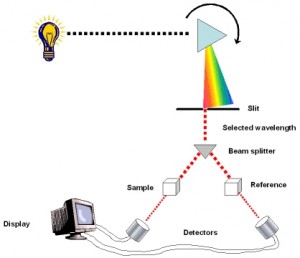
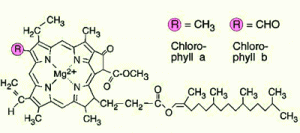
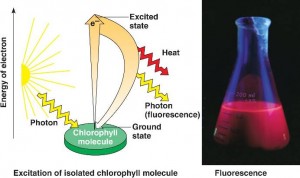
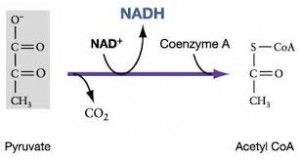

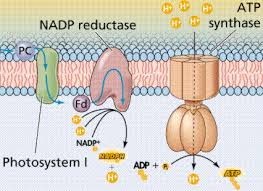

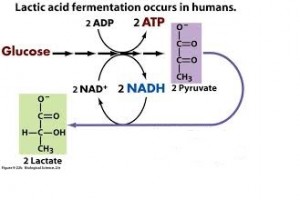



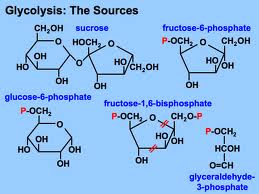
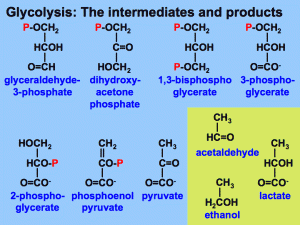
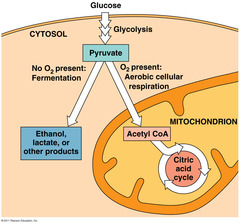
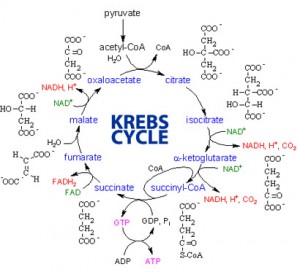












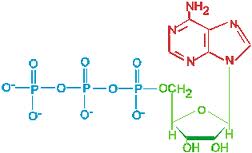








![image082[1]](http://borzuya.com/wp-content/uploads/2014/05/image0821-300x270.jpg)

